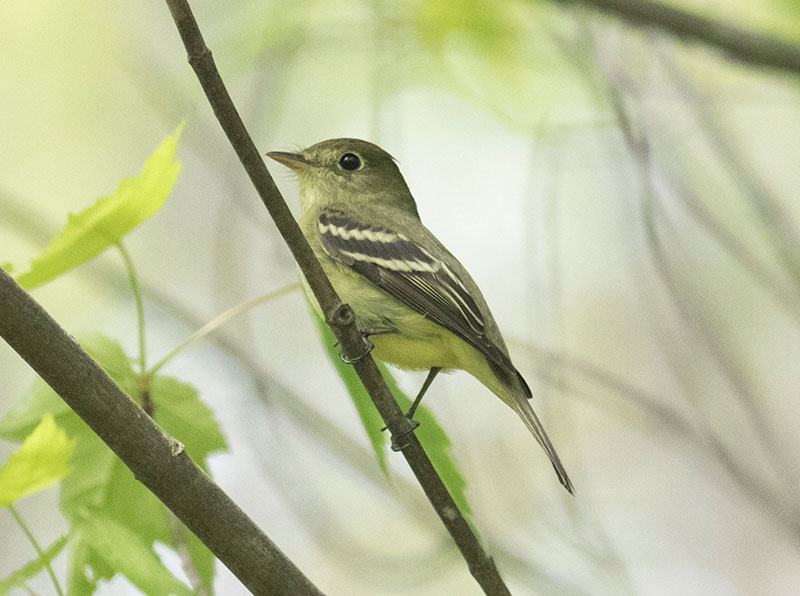Yellow-bellied Flycatchers
5/27/18
By David Brown

Yellow-bellied Flycatcher
On May 18th I had the opportunity to photograph a yellow-bellied flycatcher (Empidonax flaviventris) in State Game Lands 298 south of Rose Valley Lake. This small bird has an 8-inch wingspan and weighs about half an ounce. Small numbers migrate through Pennsylvania every spring and fall. It is always an excited species to see, even for experienced birders.
Yellow-bellied flycatchers spend the winter in Mexico and Central America. During May they migrate through Pennsylvania with most heading for Canada. They build nests of moss on the ground in swampy areas of boreal forests. The breeding range extends south into the northern United States with Pennsylvania as the southern limit. It is one of the rarest nesting species in Pennsylvania with nesting pairs in only a few counties including Lycoming. The bird I saw was not in suitable breeding habitat and was just a migrant stopping to fuel up before continuing north.
The flycatchers in the Empidonax genus all look similar and are difficult to identify by sight. Fortunately, the vocalizations of these species are instinctual rather than learned so birds can be confidently identified if calling. Other species in this genus that we get in our area are the Acadian flycatcher, willow flycatcher, alder flycatcher, and least flycatcher. The yellow-bellied flycatcher is the only flycatcher in our region with a yellow throat. It has an eye-ring and bold wingbars that are white in adults and yellowish in immatures. As the name “flycatcher” suggests, it is often seen flying from a perch to catch insects out of the air.
May is the peak of spring migration with nearly 200 species being documented most years. As May turns to June, migration winds down and the nesting season is in full swing. During this time it becomes important that birders and photographers act in an ethical manner. It may be tempting to investigate a nest or get a closer look at a bird but you must always put the bird's well-being first. Any disturbance could be detrimental while birds are devoting their full energy to nesting and raising young.
We are lucky to live an area with so many opportunities to enjoy nature so I encourage everyone to get outside this summer and see something new.